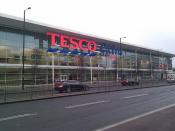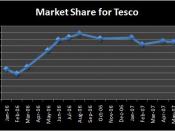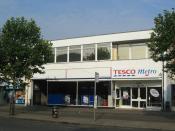Tesco is the largest food retailer in the UK, holding an estimated 15,5 % share of the total market. Tesco also aims to grow their share in the non-food markets. The two most important factors in Tesco's success are listening to customers and learning from mistakes. Offering their customers quality products for low prices and putting local people first in the way they run their business is also core to their strategy. (Dickson, M. 2001)
Tesco's target market
The grocery retailing market is divided into geographic segments. For a supermarket as Tesco it is important to focus on the different consuming habits in each region and neighbourhood to reach its target market efficiently. A typical location for a Tesco store is a suburban or urban place with good access to roads and public transport. Tesco has strong national coverage, but most of its superstores are in South and Southeast England.
(http://www.mintel.com)
Another way of segmenting the market is by using the ACORN ( =A Classification Of Residental Neighbourhoods), which is a geodemographic segmentation method that is shown in Appendix 1. The ACORN is based on census data. Every postcode in the country is given a group name from A-F. When using ACORN, Tesco can easily define its local customers and make its products and services suit them. See Appendix 2, which shows the percentage of adults above 15 years of age who do their main shopping at Tesco. The consumers are divided into ACORN categories and their demographic location.
This table shows that Tesco has been successful in reaching its target market, which is the A and B categories. The C and D groups are where Tesco loses its customers to other grocery retailers. Since Tesco has most of its stores in the South and the Southeast England, the northern...



TESCO supermarket success in the UK
Great Analysis of TESCO supermarket success in the UK and some suggestion on how to expand its international market presence.
0 out of 0 people found this comment useful.